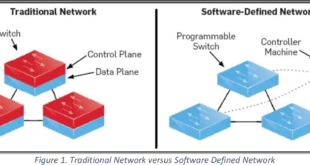In today’s interconnected world, business systems play a critical role in managing and controlling various workflows, including manufacturing, infrastructure, and logistics. These systems, known as Business Logic (BL), automate and streamline operations for governments and businesses globally. However, these BL systems are not immune to logic faults and vulnerabilities, which can lead to significant disruptions and potential losses.
To address this issue, the Defense Advanced Research Projects Agency (DARPA) initiated the Business Process Logic (BPL) program in May 2023. This program aims to develop tools that identify and characterize logic faults in BL systems to enhance their security and protect critical workflows.
The Importance of Business Logic (BL) Systems:
Automated workflows, managed by BL systems like SAP, Oracle, Workday, IBM Dynamics 365, or Salesforce, have become the backbone of enterprise operations worldwide. These systems control and streamline processes in various sectors, including seaport administration, weapons system assembly, and government procurement, such as the Department of Defense’s Procurement Integrated Enterprise Environment (PIEE). BL has become an essential tool, comparable to the telephone’s significance in the 1920s. However, vulnerabilities and coding errors can lead to operational risks and inefficiencies, necessitating the development of tools to identify and address logic faults.
Identifying Logic Faults:
The Need for BPL: Nearly all businesses with substantial sales employ BL systems to manage their operations. However, these systems can be susceptible to logic faults, resulting in adverse consequences. For example, a data entry error in an inventory system could lead to critical components being reported as unavailable, halting production and delaying orders to multiple countries. To mitigate such risks, the BPL program aims to identify potential issues like one-way actions or lost resources, thus enhancing resilience and reducing inefficiencies in supply chain management.
Understanding BL Systems and Limitations:
BL systems offer a coding environment that enables complex processes through user-friendly tools, such as visual point-and-click coding, embedded spreadsheets, and scripting languages. However, system security and comprehensive testing often take a back seat to the agility required to meet market demands. In some cases, data integrity checks are overlooked, leading to duplicated and faulty data. BL systems assume reasonable data input by humans, but as the earlier example demonstrates, this assumption is not always reliable.
Scientific and Engineering Challenges:
The BPL program acknowledges the limitations in analyzing large-scale BL systems due to scientific and engineering challenges. Current practices lack the ability to analyze sub-system behavior, grapple with ambiguous representations, measure the impact of logic faults, and trace faults back to human-entered source code. Engineering limitations include the lack of automated enterprise process flow ingestion, difficulty in characterizing high-level BL faults, inadequate data provenance across sub-systems, and the absence of fault analysis across composed systems.
BPL’s Focus and Scope:
It’s essential to note that the BPL program is not primarily focused on identifying underlying cyber vulnerabilities in BL infrastructure. While cybersecurity is crucial, BPL’s primary objective is to address logic faults and vulnerabilities within BL systems. The program aims to develop tools that can automatically characterize and catalog high-level BL faults, trace fault analysis across composed systems, and provide insights into faulty logic flows.
The BPL program will run in three stages over a 48-month period, according to a document attached to the announcement.
Phase I will cover the demonstration of a test platform that is representative of a Defense Industrial Base manufacturing BL system, and the following phase will be a test platform demo for a different type of workflow, particularly a DIB logistics BL system. A go/no-go decision will occur after this step.
Phase III will involve collaborative work on the transition of the technologies developed in the prior two phases.
Program Technical Areas:
- TA1: Represent and Characterize Logic Faults TA1 focuses on developing techniques to represent and characterize logic faults in business logic (BL) systems. This involves ingesting BL systems, associated documentation, and user training materials to identify flaws or vulnerabilities. The goal is to reason across the logic embedded in the BL system and identify potential issues. The challenge lies in addressing the scale of large BL systems with hundreds to tens of thousands of users. The representations developed should support this kind of reasoning and enable the identification of logic faults and vulnerabilities.
- TA2: Resolve Vulnerabilities TA2 aims to resolve the identified vulnerabilities in BL systems. It involves tracing logic faults to human-entered code, characterizing and cataloging high-level BL faults, maintaining data provenance across sub-systems, and tracing fault analysis across component interdependencies. The goal is to provide mitigations for the identified vulnerabilities without introducing new faults. TA2 performers should have the ability to receive and process controlled and classified information regarding system vulnerabilities.
- TA3: Test and Evaluate Defense-Critical Workflows TA3 is responsible for testing and evaluating defense-critical workflows using representative Defense Industrial Base (DIB) platforms. Operational software and documentation, such as ISO 9000, user guides, and training materials, will be provided to perform the tests. TA3 validates the solutions and capabilities developed in TA1 and TA2. It manages a collaboration site where TA1 submits identified logic faults and vulnerabilities and acts as an intermediary to inform the DIB of detected flaws and issues.
Conclusion:
The BPL program initiated by DARPA represents a significant step toward enhancing the security and reliability of business systems. By focusing on identifying logic faults and vulnerabilities in BL systems, the program aims to minimize disruptions, reduce operational risks, and optimize supply chain management. As businesses increasingly rely on BL systems for efficient operations, the development of tools to address logic faults becomes paramount. With the BPL program, DARPA aims to mitigate these risks and protect critical workflows for governments and businesses worldwide.
 International Defense Security & Technology Your trusted Source for News, Research and Analysis
International Defense Security & Technology Your trusted Source for News, Research and Analysis

